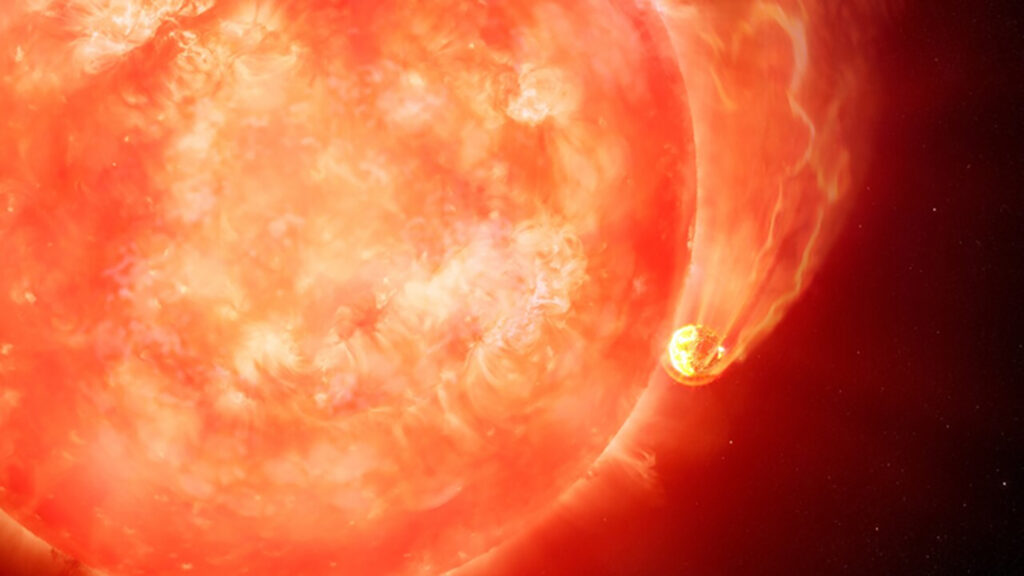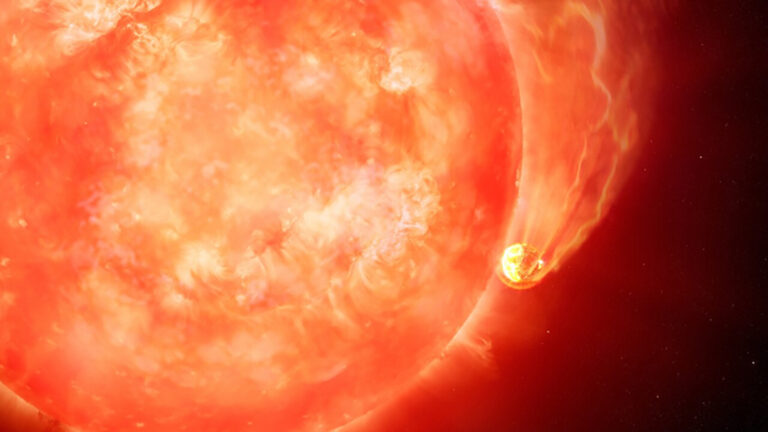Astronomers Capture Dying Star Indulging in a Final Feast of Planetary Proportions
Astronomers have observed a distant star devouring a planet in its orbit as part of its “death throes.” The exoplanet met its demise when the expanding host star engulfed it. The observation team utilized the Gemini South Adaptive Optics Imager (GSAOI) on Gemini South, a component of the International Gemini Observatory, to detect a radiation burst emanating from the Galactic disk of the Milky Way. This burst signaled the star’s expansion as it consumed a planet approximately ten times the size of Jupiter.

Co-author Ryan Lau, an astronomer at NOIRLab, stated, “These observations provide a new perspective on finding and studying the billions of stars in our Milky Way that have already consumed their planets.” The findings are published in the journal Nature.
Beyond its implications for distant stars, the research hints at the fate awaiting our own solar system in about 5 billion years. When the sun enters its red giant phase, it will enlarge to potentially 100 times its current size, reaching out to the orbit of Mars and obliterating the inner planets.
Stars enter the red giant phase when they deplete hydrogen necessary for nuclear fusion, leading to gravitational collapse. As the core collapses, the outer layers are shed, causing the star to expand. During this phase, a star can swell up to 1,000 times its original size.
While scientists anticipated that this process would destroy planets orbiting close to these stars, witnessing this destructive event is unprecedented. The emission signaling this process, ZTF SLRN-2020, comprised a brief optical outburst followed by a prolonged and bright infrared emission.
The researchers, through various models, concluded that ZTF SLRN-2020 resulted from the merger between a dying star and an object slightly smaller than it—specifically, a planet with a mass equal to or less than approximately ten times that of Jupiter.
Smadar Naoz, a researcher from the University of California Department of Physics and Astronomy not involved in the study, explained that the observed giant planet likely approached its parent star too closely, interacting before the outburst, which correlated with the planet’s engulfment by the star. Naoz emphasized the importance of future observations of ZTF SLRN-2020 to understand the extent of the planet’s consumption and the mechanisms driving such events.
References: Kishalay De, et al., An infrared transient from a star engulfing a planet, Nature, (2023). DOI: 10.1038/s41586–023–05842-x; Smadar Naoz, Planet swallowed after venturing too close to its star, Nature, (2023).
Feature image credit: International Gemini Observatory/NOIRLab/NSF/AURA/M. Garlick/M. Zamani
Do not forget to share your opinion with us to provide you with the best posts !




0 Comments